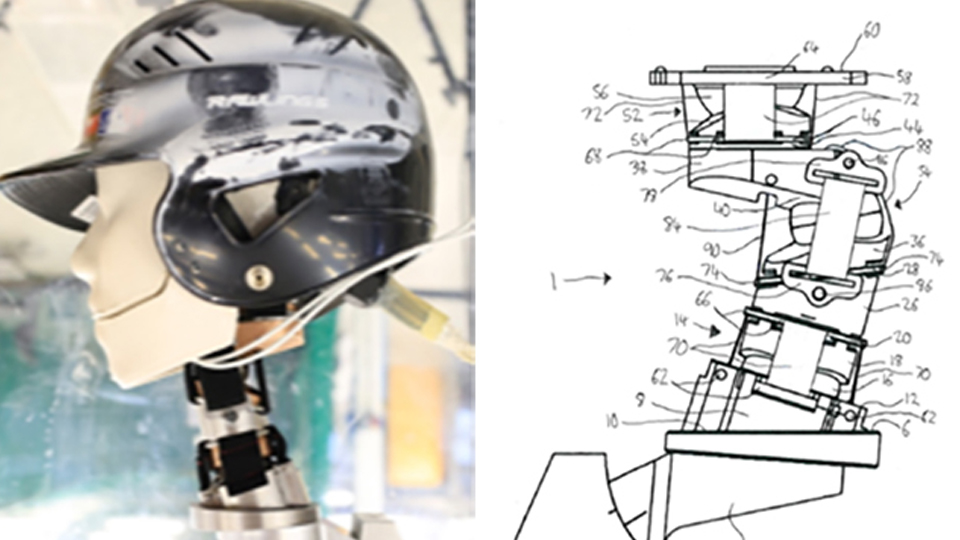As a BSc Sports Technology graduate (2015) and competitive road cyclist, Jon decided to undertake a PhD working in Traumatic Brain Injury (TBI) in sports, which he completed in 2020.
Supervised by Dr Sean Mitchell and Dr Paul Sherratt, Jon worked on the Loughborough University Surrogate Neck (LUSN), addressing the limitations of surrogate necks of the past 50 years. The LUSN is biomechanically representative of an average male and allows the surrogate head to move relative to a surrogate body. The devices are mechanical representations of human structures such as hands and necks and allow for ethical laboratory testing of sports protective equipment such as helmets.
On completion of his PhD, Jon was awarded a postdoctoral research position through the Enterprise Project Group to continue the development of the LUSN. He has also been able to apply for an international patent to protect the LUSN’s IP.
Jon said:
“The future development will allow us to represent all levels of neck muscle activation, from being unbraced and unprepared to being completely prepared for an impact.
“The increased availability of biomechanical data on the female neck from other research groups will also allow us to address the gender-imbalance with a female-specific LUSN for use in these impact scenarios.”
The surrogate neck has already been used to investigate the risk of mild TBIs such as concussion in baseball due to high-speed ball impacts.
The research won the Mizuno Sport Award at the International Sports Engineering Association Conference in Tokyo 2020, in collaboration with the Tokyo Institute of Technology.
Jon has since been awarded a Japan Society for Promotion of Science Postdoctoral Fellowship to conduct automotive occupancy safety research in collaboration with the Japan Automobile Research Institute and the Tokyo Institute of Technology.
The research will include a world-first impact scenario. The LUSN can represent an unbraced response whilst connected to a novel Japanese surrogate head that is instrumented to reveal the motion of the brain relative to the skull.
The neck is also currently being used to help inform the development of an international test standard for protective equipment used in field hockey.
Through continued development and use of the LUSN, the hope is that it will continue to contribute to a reduction in the risk of TBIs for participants of sport.
